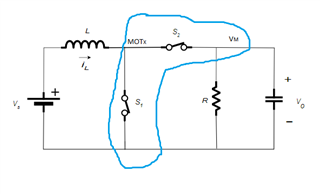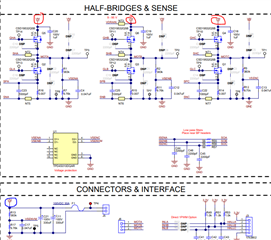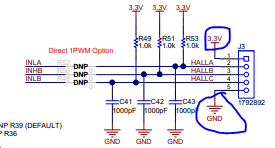Other Parts Discussed in Thread: DRV8353R, DRV8350
Good morning,
I have a DRV8353RH-EVM which I intend to use as converters/inverters. The fact is that we bought this to use it in the split rail mode. However, I am not sure how this works exactly. When working as a boost converter, we use just use one half bridge of the EVM in the way the attached picture shows (boost converter topology); the encircled region is part of the EVM, the rest is connected from the outside.I understand that in the split rail configuration we can have V0 (attached picture) different to the voltage connected in J5. Is this possible? If I am wrong, I really hope you can explain a bit more this split rail configuration.

Thanks in advance,
Jon



